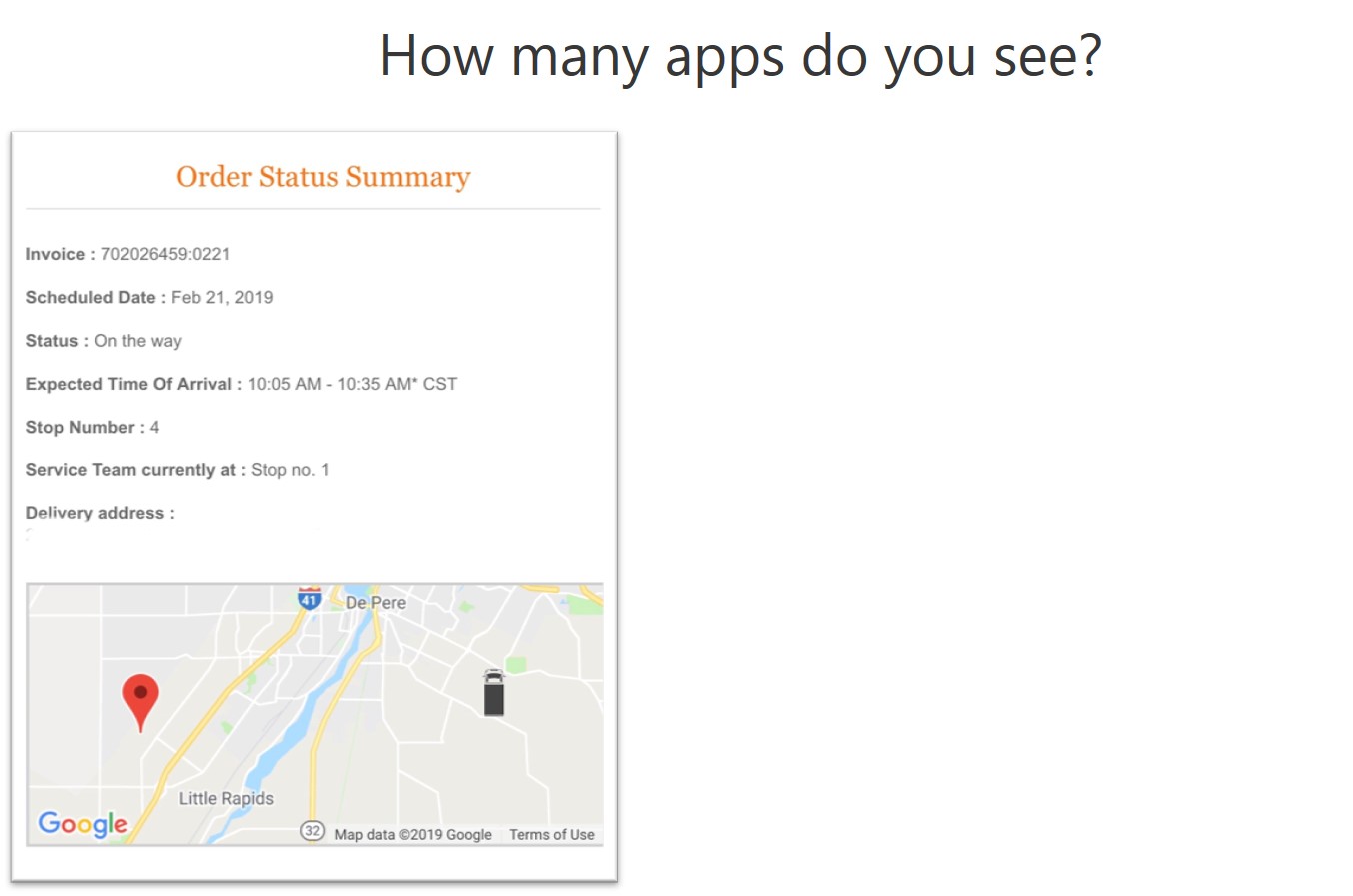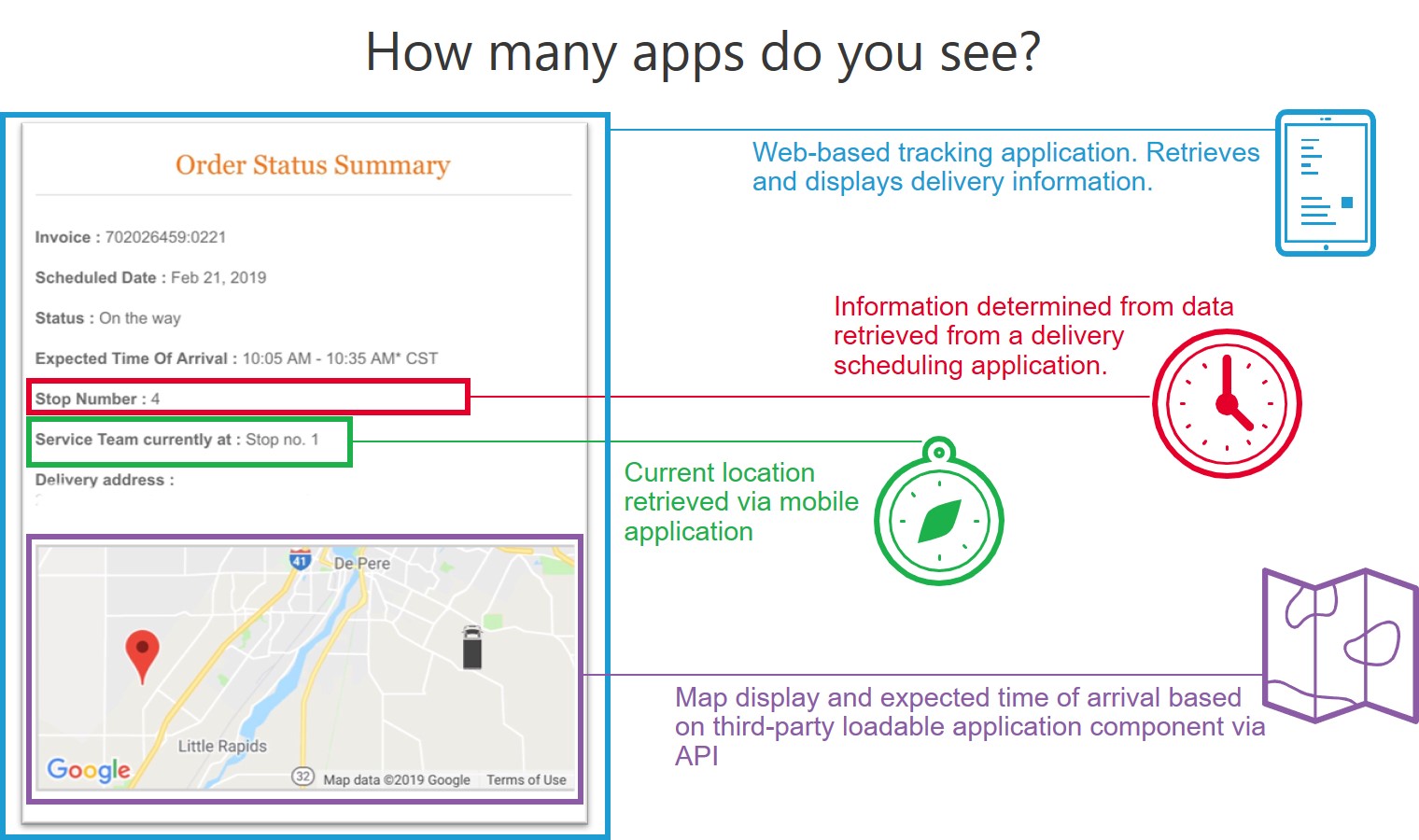Digitale Transformation und die Explosion des App-Portfolios
Die Nachfrage nach Echtzeit-Interaktion, unmittelbarem Engagement und digital bereitgestellten Informationen ist nahezu unersättlich. Ob uns eine ganze Bibliothek von Filmen und Fernsehsendungen auf Knopfdruck zur Verfügung steht, oder ob wir eine Mitfahrgelegenheit finden, einen Tisch reservieren oder die nächste Tankstelle finden können, ist nicht annähernd so wichtig wie die Tatsache, dass jede Art von Organisation derzeit unter dem Druck steht, auf die Bedürfnisse der Kunden einzugehen und digital Mehrwert zu schaffen.
Das Ergebnis wird allgemein als „digitale Transformation“ bezeichnet. Die stetige Migration hin zu integrierten digitalen Echtzeiterlebnissen in allen Aspekten unseres Lebens. Es schürt den Wettbewerbsdruck. Nicht immer ein Vorteil, nur ein Druck. Die erste Organisation, die ein solches digitales Erlebnis anbietet, hat den Vorteil, die Messlatte für die Konkurrenz höher legen zu können. Andere müssen folgen – und zwar in Kürze – oder sie laufen Gefahr, zurückgelassen zu werden.
Das Ergebnis ist eine Explosion der Anwendungen. Mobile Anwendungen. Webanwendungen. Integrierte Anwendungen.
Dieser letzte Teil ist wichtig, da das Konzept einer „monolithischen“ Anwendung endgültig tot ist. Es kommt selten vor, dass eine Anwendung vollständig eigenständig und ohne die Hilfe externer Anwendungen ausgeführt werden kann. Drei der fünf wichtigsten Anforderungen an neue Tools in der Umfrage zur Modernisierung von Unternehmensanwendungen enthalten das Wort „integrieren“. Integration mit Daten, Integration mit lokalen Lösungen und Integration mit vorhandenen Cloud-Anwendungen. Integration ist notwendig, da die von den Verbrauchern gewünschten – und benötigten – Daten in mehreren Systemen vorhanden sind, die über mehrere Clouds und Rechenzentren verteilt sind.
Der Abruf dieser Daten erfolgt über eine Anwendung. Tappen Sie nicht in die Falle und glauben, dass APIs Anwendungen ersetzen. APIs sind eine Schnittstelle. Es handelt sich dabei um einen speziellen Integrationsstil, der die Ausführung einer Geschäftslogik erfordert. Sie sind eine Schnittstelle zu einer Anwendung oder einem System.
Deshalb explodiert mit der digitalen Transformation auch die Zahl der Anwendungen in den Portfolios von Unternehmen. Leider sind sich die meisten nicht darüber im Klaren, wie explosiv das Wachstum tatsächlich ist. Denn um Unternehmensbenutzern und Verbrauchern das digitale Erlebnis zu bieten, nach dem sie sich sehnen, müssen Daten aus vielen Anwendungen gesammelt werden, um ein einziges, zusammenhängendes Erlebnis zu präsentieren, das die Wahrheit verbirgt.
Machen Sie den Test! Wie viele Apps sehen SIE?
Ziehen Sie diese einfache Anwendung zur Sendungsverfolgung in Betracht. Raten Sie, wie viele Apps diese einfach aussehende Anwendung tatsächlich umfasst. Hey, nicht vorab auf die Antwort gucken.

Ich schätze, die meisten Leute würden mit „zwei“ antworten. Die Einbindung einer Google-Karte ist ein recht guter Hinweis darauf, dass die Anwendung eine Google-App nutzt – auf die über eine API zugegriffen wird – um den Standort der Lieferadresse und des Lieferfahrzeugs visuell anzuzeigen.
Aber ich sehe mindestens vier – und wahrscheinlich mehr.
Die Webanwendung selbst ist eine App. Die angezeigten Informationen stammen jedoch aus mehreren anderen Anwendungen – einschließlich der mobilen App, mit der die Zusteller ihren Tag verfolgen und ihren Standort melden. Da ich an dem für die Lieferung geplanten Kauf beteiligt war, kann ich Ihnen sagen, dass die Planungsanwendung von der Anwendung, die zum Abschließen des Kaufs verwendet wird, getrennt ist. Das bedeutet, dass die Planungsdaten aus einer anderen Anwendung stammen.

Wenn wir über die Komponentisierung von Anwendungen sprechen, dreht sich die Diskussion für Infrastrukturanbieter im Allgemeinen um Microservices und Container. Und es stimmt, dass die „Webanwendung“ tatsächlich aus mehreren kleineren „Anwendungen“ bestehen könnte, die als Mikroservices in einer Containerumgebung bereitgestellt werden. Es könnte sogar in der öffentlichen Cloud bereitgestellt werden. Es gibt jedoch zahlreiche Wege, auf denen Anwendungen zerfallen und die Anzahl der in den einzelnen Unternehmen verwalteten Anwendungen deutlich steigen kann. Dazu gehört auch die Nutzung von Drittanbieterkomponenten – wie etwa Google Maps – sowie von mobilen Apps.
Hierzu zählen neue Webanwendungen, die alle unterschiedlichen Daten in einer einzigen Anzeige zusammenführen. Denn niemand hat die Zeit, zwischen drei verschiedenen Anwendungen hin- und herzuspringen, um alles zusammenzustellen. Das ist die digitale Wirtschaft – wir erwarten, dass Apps die Drecksarbeit für uns erledigen. Und Unternehmen werden dieser Erwartung gerecht, indem sie neue Anwendungen bereitstellen, die auf bestehenden – und externen – Anwendungen aufbauen.
All dies weist darauf hin, dass die digitale Transformation das Wachstum von Anwendungsportfolios vorantreibt und die Art und Weise verändert, wie diese entwickelt, bereitgestellt, integriert und letztlich sogar genutzt werden. Dies bedeutet wiederum, dass sich auch die Art und Weise ihrer Sicherung, Skalierung und Bedienung ändern muss.
Dies bedeutet , dass sich auch die Anwendungsbereitstellung verändern muss .
